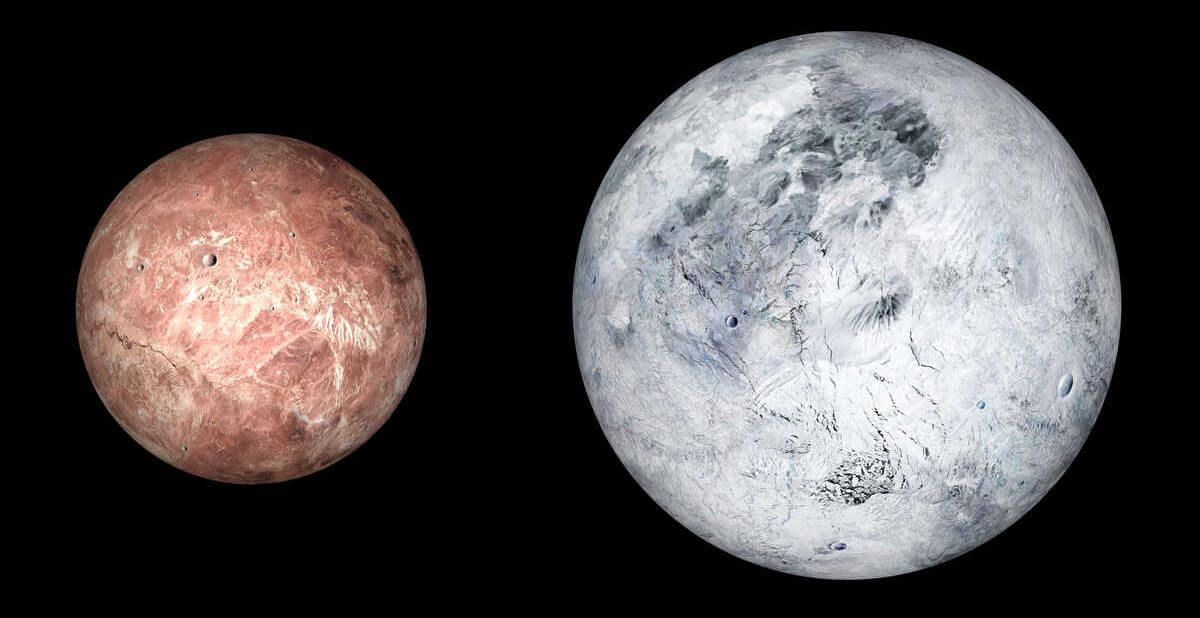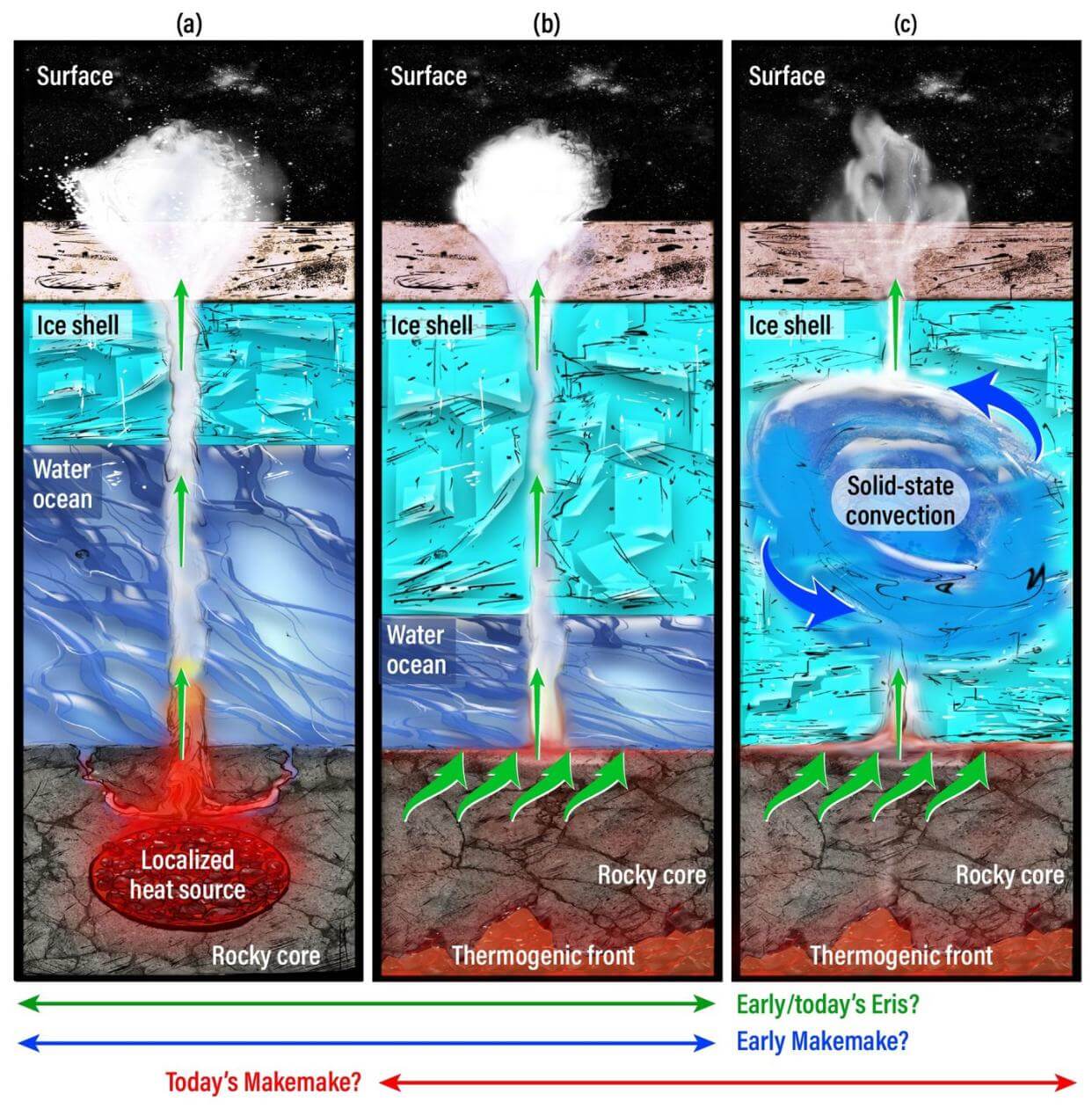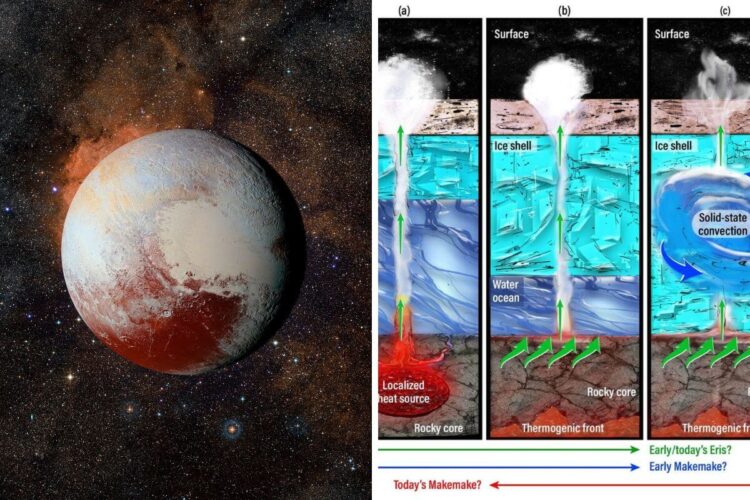The icy expanse beyond Neptune, known as the Kuiper Belt, has long held the fascination of astronomers. This region is home to a multitude of frozen worlds, including dwarf planets like Makemake and Eris.
But beneath their seemingly desolate surfaces, recent discoveries hint at a hidden realm – vast oceans of liquid water.

This possibility stems from groundbreaking observations made by the James Webb Space Telescope.
This powerful instrument, equipped with infrared vision, can peer through the icy crusts of these distant objects, revealing clues about their internal makeup.
The data gathered by Webb suggests that both Makemake and Eris harbor warm cores. This internal heat source is believed to be generated by the decay of radioactive elements within the planets’ rocky mantles.

The presence of a warm core is crucial, as it provides the necessary energy to melt ice and potentially sustain liquid oceans beneath the icy surface.
Another intriguing finding is the youthful appearance of the icy crusts on these dwarf planets. This observation, made possible by Webb’s advanced spectroscopic capabilities, indicates ongoing geological activity.
The constant renewal of the icy surface suggests that the internal heat source is not merely a remnant of the planet’s formation but an ongoing process.
These discoveries hold immense significance for our understanding of the diversity and potential habitability of celestial bodies in our solar system.
The existence of liquid oceans on dwarf planets like Makemake and Eris challenges our traditional notions of where life might exist.
While these oceans may be far from hospitable as we know it, they could potentially harbor unique forms of life adapted to the extreme conditions, opening up exciting possibilities for future exploration.
However, confirming the presence of these hidden oceans definitively requires further investigation. While Webb’s observations provide compelling evidence, additional data is needed to solidify the case.
Future missions equipped with specialized instruments to probe the depths of these dwarf planets could be instrumental in unraveling the secrets hidden beneath their icy surfaces.
The prospect of liquid oceans within dwarf planets like Makemake and Eris paints a fascinating picture of the diversity and potential complexity of our solar system.
These distant worlds, once thought to be mere frozen outposts, may now hold the key to unlocking new avenues in our quest to understand the origins and potential for life in the universe.








